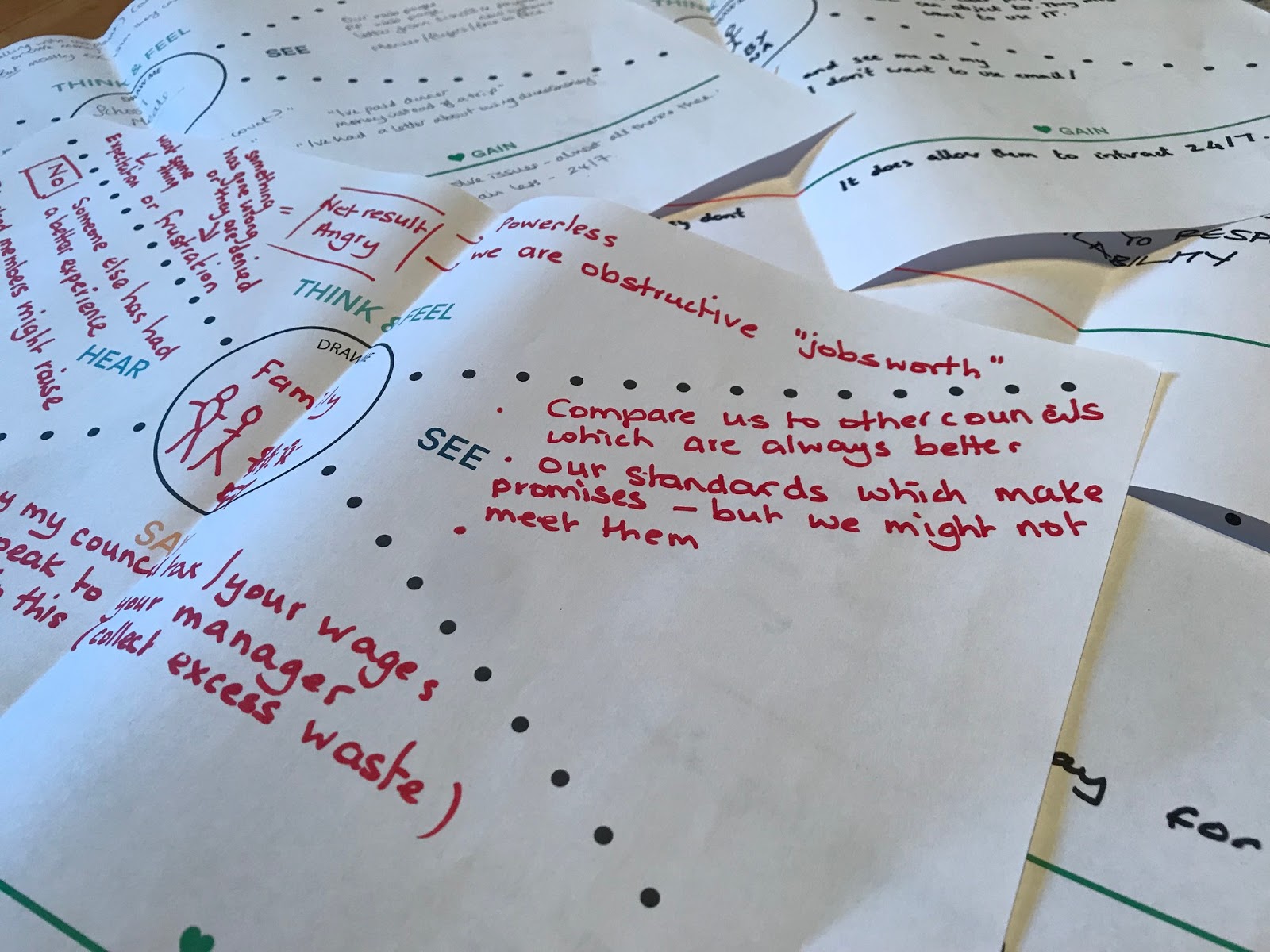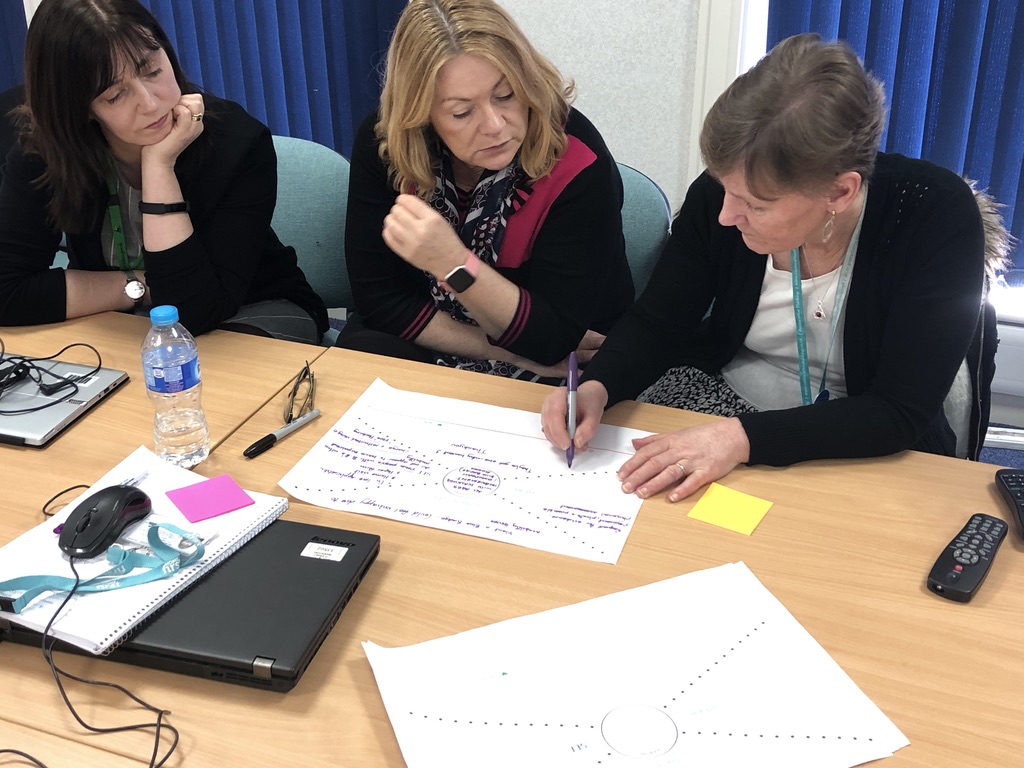My new found love of empathy mapping

Empathy mapping is a tool that asks teams to think from the user’s perspective
We’ve written a few blog posts about our recent project with North Lincolnshire Council to share some of the tools and techniques we used to help assess their digital maturity. Here’s another one!
Alongside a number of one-to-one interviews with people in various roles at the council, we ran workshops with service managers to find out more about how they deliver services to citizens. One of the tools we used was empathy mapping. This is a tool I’ve used in the past with varying degrees of success, but it worked really well this time!

What is it?
Empathy mapping is a tool that asks teams to think from the user’s perspective. It can help to work in pairs or small groups provided they all provide products/services to a similar user type. It’s split into 7 parts:
1. Draw me
Describe the key attributes of the user your map is about. Do they have a family? Are they digitally excluded? Do they have specific accessibility needs? This quickly gives an idea of who is using the service and how their circumstances may affect their experience.
2. Think and feel
What is this person thinking and how do they feel about their situation when they come into contact with you? Their mental state will impact on how they react to information and tasks, so it’s important to accommodate this as we design services to meet their needs and ensure they can reach their end goal.
3. Hear
What are they hearing from you/elsewhere that might influence their actions/attitude? What influences their decision making? What might they hear from friends, family, the news, the radio etc? What impact does this have on their expectations of a product/service?
4. See
What are they seeing from you/elsewhere that might influence their actions/attitude? What environment is your service offered in? What competitors or comparators are there and what do you know about them? People will naturally compare their experience with you to what they have experienced elsewhere. Capturing this gives you a better understanding of basic expectations.
5. Say
What might they say to you when they interact with your services? What prompts them to say this? How does the service handle this?
6. Pain points
What makes things difficult for them? Why is it difficult? Why is a particular aspect important to them? By outlining pain points you can look to remove them from the service.
7. Gains
What is going to make them feel positive about their experience? What is success for them? Why is that important? How can the service go above and beyond basic expectations? Identifying these aspects can turn an ok service in a great one.

When and why to use it?
Empathy maps are really useful as a platform for teams to share what they know about their users.
Sometimes this sharing will be assumptions, or related to a few memorable interactions. But any information is a starting point for service designers to understand a bit more about the sort of person using a product/service, what they want to get from it and to identify their knowledge gaps around different behaviours and expectations.
It gave us a real sense of how stressful some interactions can be. Some council services can be particularly sensitive and emotional, and having that understanding can positively influence how a service is designed and delivered.
For this project, as is often the case, there wasn’t time and budget to do primary user research into every council service, but capturing anecdotes and views from the service managers was enough to give us an idea of what some of the issues could be, and identify those that could be explored further.
Allowing the service managers to share their experiences, also showed there are a lot of similar problems to be resolved across different services.
In summary (and some tips)
- empathy maps are a useful warm-up tool to share user insights and identify knowledge gaps before going into initial ideas, but be wary if they are not based on any primary user research
- they cover 7 main areas that aim to describe a user and what they think, feel, hear etc. We use a template printed onto A3 or larger when doing mapping with clients
- you can use them individually or in small groups if you’re working with people that provide services for the same kind of user with the same kind of needs
- you can use empathy maps to share your experiences with others
- you can also use them to align teams before embarking on design activities by ensuring everyone has a shared view of who the user is and what they need from a service in their context
- they can inform the content of the user research plan for discovery and provide a hypothesis to explore with real users.
I’d be really interested to hear from you if you have used empathy maps before. What did you use them for? What do you think of them? Please get in touch.